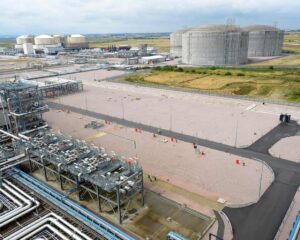
Despite significant geopolitical challenges and policy shifts, the global transition to renewable energy has accelerated significantly over the past year. This progress comes as countries worldwide intensify efforts to meet 2030 decarbonization goals, despite a previously sluggish pace. The World Economic Forum’s annual report offers an optimistic outlook for global climate objectives, highlighting improvements in energy equity and sustainability driven by easing energy prices, subsidy reforms, and increased clean energy adoption.
The report, released in June, notes that the average Energy Transition Index scores improved by 1.1% in 2025, marking a more than twofold improvement over the average rate of the previous three years. Notably, while wealthier nations continue to lead in decarbonization, developing economies are making the most significant advances, with emerging economies in Europe and Asia climbing the ranks.
Renewables on the Rise
According to a report by the International Energy Agency (IEA), renewables are projected to meet nearly half of global electricity demand by the end of the decade, driven largely by a substantial increase in solar energy production. The IEA highlights that anticipated global renewable energy additions between now and 2030 are expected to reach over 5,500 gigawatts, equating to the current power capacity of China, the European Union, India, and the United States combined.
“Renewables are moving faster than national governments can set targets for. This is mainly driven not just by efforts to lower emissions or boost energy security – it’s increasingly because renewables today offer the cheapest option to add new power plants in almost all countries around the world,” stated IEA Executive Director Fatih Birol.
Birol emphasized that the growth of renewables, particularly solar, is poised to transform electricity systems globally within this decade. However, these projections are contingent upon supportive policies and favorable economic conditions, which are currently under threat.
Geopolitical Shifts Threaten Progress
In 2025, the global political landscape is rapidly evolving, notably with a significant shift in priorities in Washington D.C. The current administration has expressed a clear intent to pivot policy support back towards fossil fuels, a move that could have far-reaching implications for both U.S. emissions and global energy transition efforts. Former President Donald Trump’s cuts to climate funding may also hinder energy transition projects in developing nations.
Meanwhile, China is expected to continue its own energy initiatives, although the specifics remain uncertain. The geopolitical uncertainty is causing economic and political ripples across global energy markets, complicating the path forward for renewable energy expansion.
The IEA reports that “the energy transition has been hobbled by a backdrop of geopolitical tensions, supply chain disruption, economic volatility and rising costs.”
Challenges and Opportunities
The obstacles to continued progress are formidable. Despite more than $2 trillion invested in clean energy in 2024, global emissions reached record highs, and energy security has not seen meaningful improvement. April of this year was recorded as the second warmest ever, underscoring the urgency of the situation.
Experts caution that while progress is being made, it remains insufficient compared to the necessary pace to achieve viable net-zero pathways. The challenges are compounded by geopolitical tensions and economic instability, which threaten to derail the momentum gained in renewable energy development.
Looking ahead, the global community faces a critical juncture. As nations strive to balance economic growth with environmental sustainability, the path forward will require unprecedented cooperation and commitment to renewable energy initiatives. The stakes are high, but the potential rewards of a successful energy transition could reshape the global energy landscape for generations to come.







